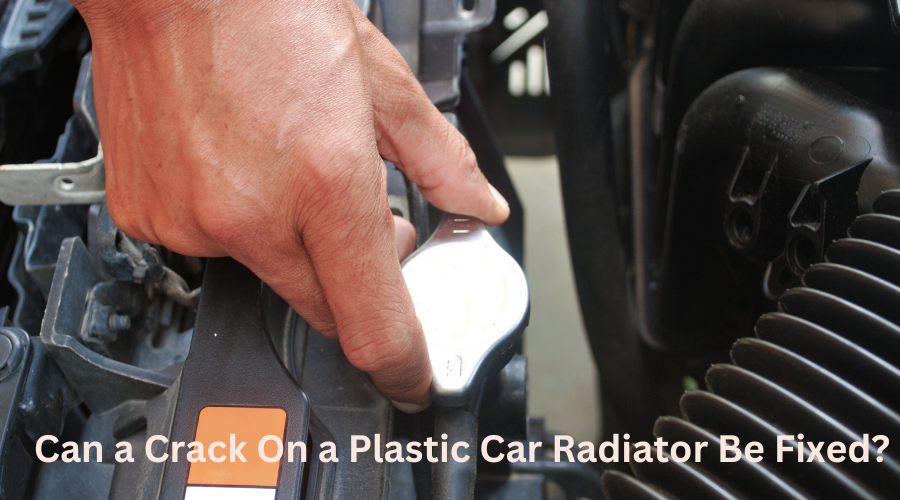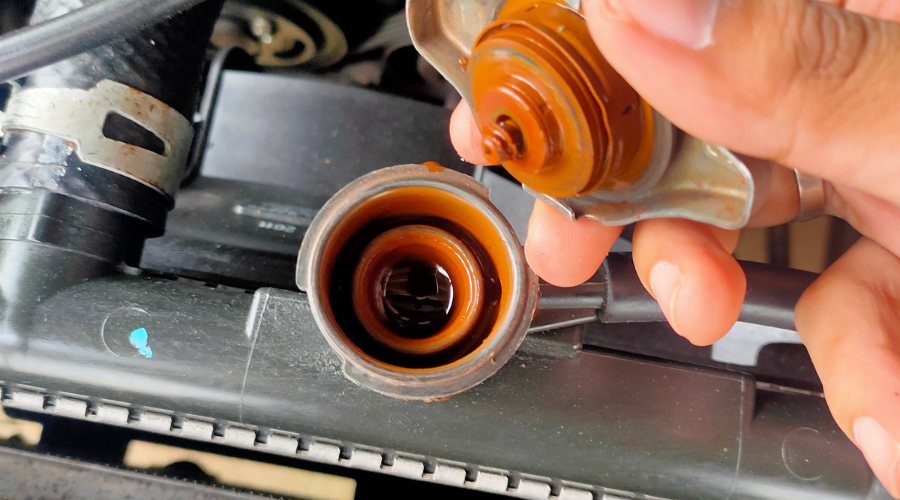

A car's cooling system is essential for maintaining the engine at the ideal operating temperature. The most critical part of this system is the radiator, which prevents engines from getting too hot. These days, many vehicles use plastic radiators due to their lightweight structures and low price.
What happens when, for instance, a plastic radiator gets a crack? Can it be fixed, or is replacement the only solution? You'll find out how to fix a cracked radiator and avoid similar issues later in this article.
A radiator is a vital part of a car's cooling system. To prevent overheating, the coolant circulates through the engine and collects heat before releasing it into the atmosphere. Metal radiators are being replaced with plastic ones in older, non-radiator cars. These radiators are inexpensive, lightweight, and effective.
However, plastic auto radiator tanks have issues. They develop cracks over time due to aging, physical damage, or heat cycles. A common question among car owners is whether the cracks can be repaired or a total replacement is required.
1. Plastic radiators decrease the vehicle's overall weight and thus fuel efficiency.
2. Because plastic radiators cost less than metal radiators, they are a cost-effective option for automakers to consider.
3. Modern engines must accommodate particularly high-temperature changes; plastic radiators are designed to withstand these.
Cracks in plastic radiators usually occur due to:
1. The plastic used in the handles can degrade, especially under high temperatures, and this expands its crack.
2. The radiator is vulnerable to minor accidents, debris on the road, or an accidental blow to the car.
3. Repeated exposure to hot and pressure cycles can also weaken the plastic and, over time, lead to crack formation.
Find damage in the first step of addressing a cracked radiator. Look under the car for coolant leaks. A leak in the cooling system shows itself by the steam escaping from the engine bay. A radiator leak may cause the coolant reservoir to be low continuously.
With a flashlight, check the radiator seams, corners, and areas under pressure. Determining where and how big the crack is helps decide whether or not it can be repaired.
Not all cracks are solvable. Here's how to evaluate the damage:
1. Repairable cracks: However, small superficial cracks or cracks on noncritical parts of the radiator can be fixed.
2. Non-repairable cracks: In general, a replacement radiator may be needed when there are large cracks, extensive damage, or cracks in areas vital to manufacturing the radiator.
However, repairs are not always possible if the core or multiple sections of the radiator are damaged.

Do-it-yourself methods are effective and economical for small cracks.
Using Epoxy or Plastic Weld
Cracks in plastic radiators are usually repaired with epoxy resin or plastic weld kits.
Steps to Repair with Epoxy:
Clean the damaged area with a degreaser and drain the coolant. The cracked area is sanded to make a smooth surface to glue the epoxy. Apply the epoxy evenly over the crack, as directed, then mix and apply.
Allow it to cure: After following the manufacturer's recommended curing time for epoxy, let it dry completely.
In plastic welding, the crack is joined together using heat. A plastic welding kit is needed to use this method, and it can be a more durable fix than epoxy.
Pros: Quick, affordable, and great for minor cracks.
Cons: Extensive damage may not last as long.
Liquid sealants, like radiator stop leaks, can temporarily fix radiator leaks. They seep into the radiator from the inside and seal the most minor cracks.
When to Use:
As a temporary remedy for the situation.
For minor leaks that don't have structural problems with them.
Limitations: Stop-leak products are not a long-term fix for the cooling system and can bypass and clog other parts.
Any DIY that is attempted with the use of this product does not work as expected, and for wider chasms, professional help is needed.
Mechanic's Approach:
When fixing an issues with plastic radiators, the mechanic calls for a heat gun and a special type of adhesive. It is safer and it holds the material more firmly in place.
Cost and Benefits:
For as low as $100 to as much as $300, a professional can repair the damage. Rather as a result of professional repair charges being slightly higher, they take your car longer roads hence providing satisfaction.
Preventative maintenance can help avoid radiator cracks and keep your radiator longer.
Tips for Maintaining Your Radiator:
Monitor coolant levels: Always check and refill the coolant to prevent overheating.
Flush the system: Take the radiator flush every 1–2 years to cleanse the debris and contaminants.
Inspect for wear: Look regularly for signs of aging, such as discoloration, brittleness, or leaks.
Drive carefully: Don't put a ton of stress on the engine, for instance, constantly idling or going hard on the engine.
Sometimes, a cracked radiator cannot be fixed; in that case, it's best to get a new one.
What to Look for in a New Radiator:
The cracks are too big or are in unsafe places.
There are many cracks or a lot of damage to the structure.
The leak still happens after repairs.
Can a crack in a plastic car radiator be fixed? Epoxy, plastic welding, or sealants are usually used to repair minor cracks. However, larger or structural cracks may need replacement or expert repair.
The automotive industry is constantly evolving, with new technologies and materials continually
READ FULLMost of us don't think about our car’s radiator plastic tank until we have to. One day, eve
READ FULLThe process of locating the correct plastic tanks to use in an auto radiator seems like looking f
READ FULL